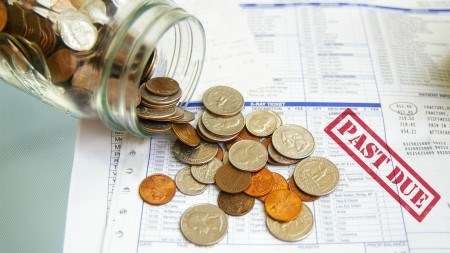Regardless of whether you’re a seasoned landlord or are renting out your property for the first time, there are potential issues to look out for. We’ve identified six of the most common issues landlords face as well as given some suggestions as to how best to deal with them:
As you aren’t the one physically living on your property, it’s wise to try and find tenants that you feel comfortable leaving your home to. Unreliable or untrustworthy tenants can make a landlord’s life extremely difficult and it’s therefore crucial that you do as much spade work upfront to ensure that any potential tenants are going to be a blessing more than a burden in the long run.
While a credit check and lease application might not be thorough enough to reveal whether or not someone is a good potential tenant, it is a good place to start. Be sure to conduct a detailed background check on each potential tenant that comes your way as this will give you some insight into their rental history and current affairs. Interviewing all potential tenants in person, as well as speaking to their previous landlords (if applicable), is also a good way to find out who they are and where they come from, so take the time to get to know who you may end up having in your rental home. That way, there won’t be any surprises down the line!
2. Drawing up the lease agreement
Nowadays, you can pick up a standard lease agreement from your local stationers but that doesn’t mean that sorting out the lease is a walk in the park. Landlords need to ensure that the lease agreement is legally correct and applicable to their property, especially when it comes to the fine print. It’s important that the lease thoroughly details exactly what you and your tenant have agreed to in order to avoid any later conflicts or confusion. It’s therefore advisable that you take your time to clearly state all terms and conditions upfront and ensure that your tenant understands and agrees before handing them the keys. We recommend purchasing a standard lease agreement and then tailoring it or adding an addendum to it detailing any specifics.
Read more: Information on the lease agreement
3. Getting the rent
Perhaps one of the most common hassles for landlords is ensuring that a tenant pays their rent in full and on time. While some issues can be avoided by doing a thorough tenant screening as mentioned above, it is sometimes unavoidable that a tenant defaults on their monthly payment so be sure that the consequences of such are well detailed in your lease agreement. That said, if you find yourself in the position where a tenant has failed to pay rent, be sure to act quickly but fairly in accordance with the agreed upon conditions. Communication here is also key, so take time to find out why your tenant defaulted and negotiate where or if possible, to ensure things don’t get unpleasant or escalate into a nasty stand-off where nobody wins.
4. Dealing with bad tenant behaviour
If you conducted a good screening of your tenants upfront and clearly specified what behaviour is or isn’t to be tolerated in the lease, you should hopefully not have any issues with your tenants during their stay. Nevertheless, it’s impossible to predict how people will behave so if you find yourself in the position where your tenants are behaving badly or, in some cases, are causing issues with the neighbours or other residents, intervene quickly and decisively. It may be worthwhile including in the lease agreement that neighbourly disputes are to be resolved between the parties concerned, with no need for your intervention. The Rental Housing Tribunal is a great resource for assistance when dealing with a troublesome tenant.
5. Maintenance and repairs
Ongoing maintenance, upkeep and repairs unfortunately go hand-in-hand with owning a rental property so be sure to bear this in mind at all times. The key to success in this regard is to conduct regular inspections of the property and to jump onto any maintenance issues or repairs as quickly as possible. Not only will this ensure good faith between you and your tenant, it will prevent any small upkeep issues from becoming huge repair jobs later on.
See more: A home maintenance checklist
6. Ensuring an amicable exit
While no one likes to plan with the end in mind, it is a good idea to ensure that a tenant’s eventual exit is as painless and hassle-free as possible for both parties. Drawing up and agreeing to a checklist or snag list with your tenants, prior to them moving in, is a sure way to avoid any issues come moving day. Be sure to carefully inspect the property with your tenants before they leave and only refund their deposit if you are satisfied that everything is as it should be (and your keys are back in your pocket)!
At the end of the day, being a landlord takes time, energy and money. That said, nobody wants to spend their lives sorting out a slew of rental issues, so with a little upfront planning and effort, as well as maintaining a respectful presence, you could ensure a (mostly!) headache-free tenancy for yourself as well as your tenants.




